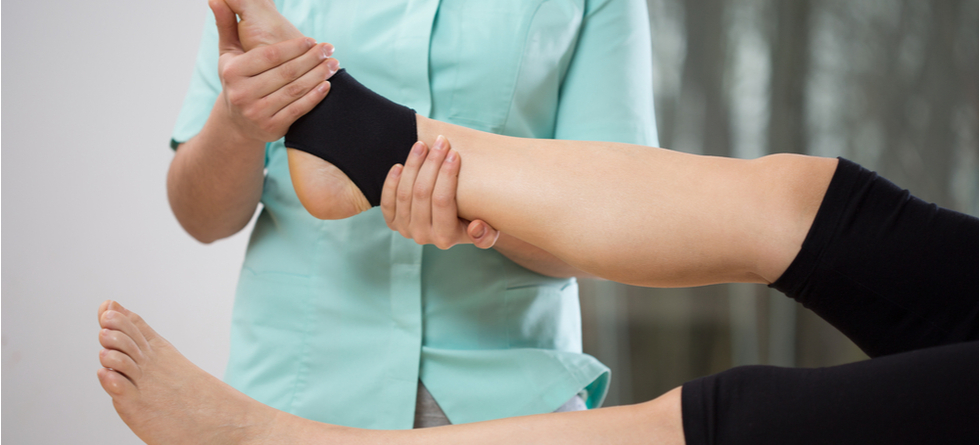
A fractured ankle may be the result of a slip or fall, or you may have just undergone surgery. It is also possible that you are experiencing ankle pain due to a condition such as arthritis.
You can suffer painful injuries to the delicate joint between the talus, or foot bone, and the fibula and tibia of your lower leg. Pain and mobility issues can negatively impact your ability to live a full life without the proper treatment. Most patients recover fully from ankle problems with physical therapy – without the need for surgical intervention.
Despite this, physical therapy can be intimidating, especially if you’re already experiencing pain from a recent injury. Having ankle pain can be treated through physical therapy. Here’s what to expect.
What is the best time to begin physical therapy?
An ankle fracture should be treated immediately after it occurs. After reducing your fracture, your doctor may reposition your bones for proper healing, and after that, the area will likely need to be immobilized by a cast.
Regardless of your next step, physical therapy becomes more valuable after this. Physical therapy can help you adapt to using an assistive device like a cane if you need one. It’s time to start exercising your injured ankle, building your strength and flexibility if you are not wearing a cast or brace, or once they come off.
Is there anything I can do to treat my own foot and ankle pain?
RICE (rest, ice, compression, elevation) is a great way to reduce pain and swelling, and encourage healing for most foot and ankle sprains and strains. In order to alleviate foot and ankle pain due to plantar fasciitis, bone spurs, or shin splints, consider investing in a pair of orthotic shoes or lifting your current shoes. Running shoes should be replaced every 300-500 miles to keep feet fresh and to prevent injuries such as Achilles tendonitis and shin splints.
Foot and Ankle Pain: Physical Therapy Treatment Options
In physical therapy, the most important goal is to become as strong, flexible, and versatile as possible. To achieve this goal, there are three main foot exercise positions.
- Dorsiflexion is the first, in which toes reach toward the sky while the heel is pushed forward. It is important to avoid pointing the toes since the work is done by the Achilles tendon and the heel.
- Plantarflexion, on the other hand, involves keeping the knee straight and pointing the toes straight ahead. It enables your foot muscles to be strengthened.
- Last but not least is eversion/inversion, where the ankle is rotated and the toe remains pointed toward the midline of the body when eversion is present and away from it when inversion is present. As a result, the ankle becomes stronger and its range of motion is increased.
We cannot imagine our bodies without our feet and ankles. We can enjoy a good quality of life by taking care of our foundation. If you develop foot or ankle pain, it is important to seek medical attention immediately to avoid further damage and prevent you from enjoying your favorite activities.